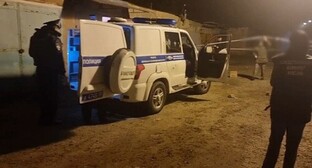25 April 2003, 03:37
Taganrog
City in Rostov oblast (province), oblast subordination, 67 km west of Rostov-on-Don. Located on the north-east coast of Taganrog Gulf of the Sea of Azov. A port. Railway station in the Rostov-on-Don - Donetsk, Ukraine line. The Rostov-on-Don - Odessa, Ukraine throughway passes near Taganrog. Population (1992 est.) 293.2 thousand, (1897 est.) 51 thousand, (1926 est.) 86 thousand, (1939 est.) 189 thousand, (1959 est.) 202 thousand, (1970 est.) 254 thousand, (1979 est.) 276 thousand.
In 1698, the cape of Tagan-Rog was the place where Peter I founded the Troitskaya Fortress and a naval base to protect the sea coast regained from the Turks, which formed the basis of the Russian Azov Navy. The name given to the fortress by Peter I did not take root, it was referred to as "the fortress on the Tagan-Rog". In February 1712, the fortress was destroyed under conditions of the Peace Treaty with Turkey, made as a result of unsuccessful Prut Campaign of Russian troops (1711). In 1769, during the Russian-Turkish War of 1768-1774, the north-eastern coast of the Sea of Azov was occupied by Russian troops and finally adjoined to Russia under the Kucuk-Kaynarca Peace Treaty (1774). Since 1775, restored Taganrog was a city in the Azov Province. After foundation of Sevastopol (1783), Taganrog lost its significance as naval base and since the 1780s, became a large foreign trade port in the south of Russia, exporting grain, lard, leather, and other agricultural production, and importing grocery goods, fruit, etc. Since 1802, Taganrog was an administrative centre. During the Crimean War of 1853-1856, the city was exposed to attacks of the English-French fleet (in 1855). In 1869, it was connected to Kharkov and Rostov-on-Don with the railway.
In 1887-1920, Taganrog was an okrug (district) city of the Don Cossack area. In the 1890s, a metallurgical, engineering, boiler and other works were built here. In 1900, industrial enterprises of the city, whose number exceeded 30, employed about 6 thousand workers. During the Civil War, Taganrog was occupied by German troops (in May, 1918), then the town was entered by the Volunteer Army under General A.I. Denikin. In January 1920, the First Horse Army entered Taganrog.
In 1920-1924, Taganrog was an okrug city of Donetsk oblast within the Ukraine; then within North Caucasian kray (region); since 1934, within Azov-Black Sea kray; since 1937, within Rostov oblast. During the Great Patriotic War of 1941-1945, it was occupied by Nazi troops (from October 17, 1941 to August 30, 1943).
Present Taganrog is an important industrial centre in the south of Russia. Mechanical engineering and metal-working: PO Krasny Kotelshchik (production of high pressure boilers for thermal power stations), Pressmash (press-forging plants), Vibropribor; a combine-building works (production of self-propelled grain combines), a shop equipment plant, an electrothermal equipment works, Pribor, a dockyard, etc. A metallurgical works (production of steel, sheet products, pipes for petroleum and gas industry). Chemical industry (Termoplast, a paintwork plant), light industry (a tannery, etc.), flavouring industry (a fish-factory, a meat-processing plant, a confectionery, a flour-and-cereal mill). A designing and technological institute of press forging robot-building.
Institutes: pedagogical, radio engineering. A drama theatre. A museum of local lore. A museum of town-planning and everyday life. A picture gallery. A literary, historical and architectural memorial reserve of A.P. Chekhov.
The old part of the city located mostly on the cape jutting out into the sea, has partially saved its appearance of the 19th century and the beginning of the 20th century: a rectangular lay-out of streets with strict separation into quarters, rather narrow streets with green plantations along pavements, with buildings of the 19th century, usually built in the style of the so-called southern Empire (characterised by indiscreet dead walls with magnificently decorated porticoes and colonnades attached). On the cape, there is a monument to Peter I (opened in 1903, sculptor M.M. Antokolsky).
In Taganrog, Russian Emperor Aleksandr I died (of meningitis) suddenly on November 19 (December 1), 1825. It was here that in 1860, the writer A.P. Chekhov was born and spent his childhood and youth.
Taganrog includes a climatic resort district of Taganrog Gulf.




